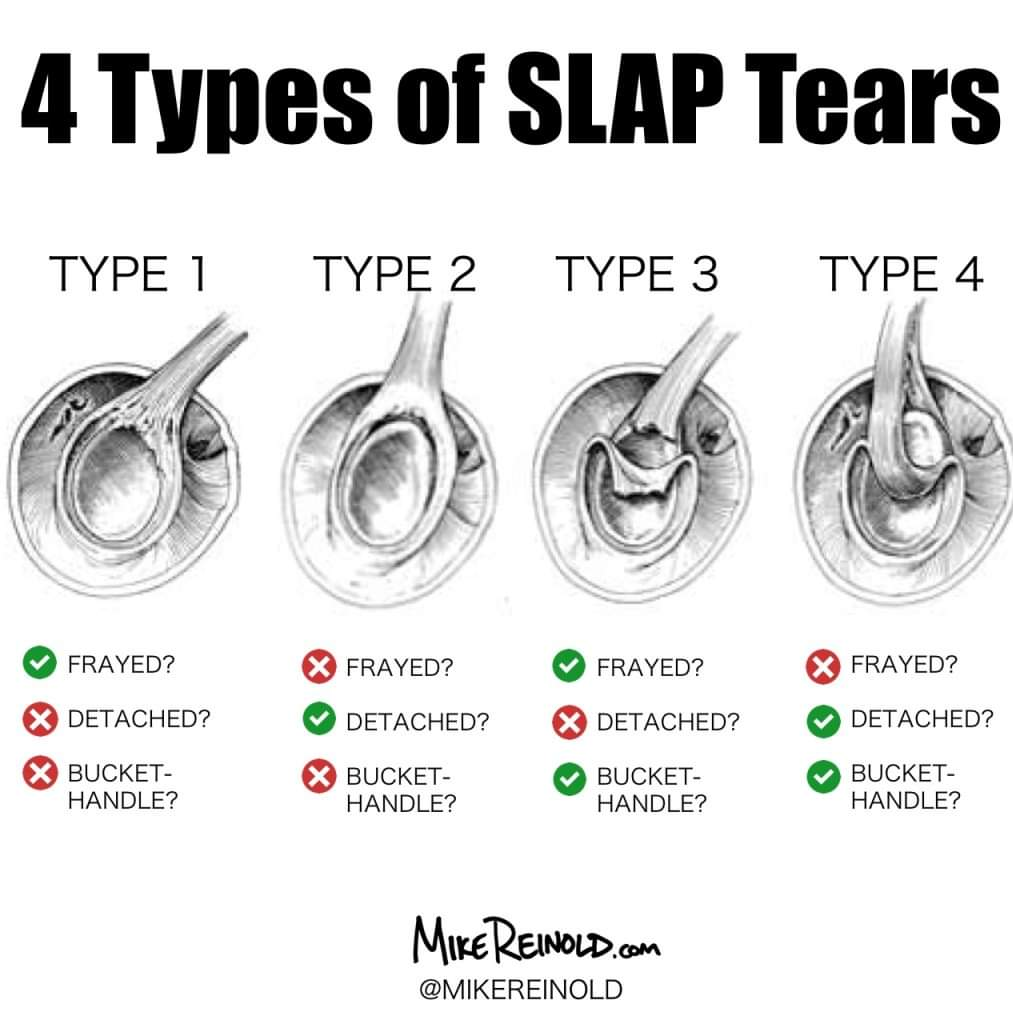
2023-07-31T17:28:11
Physiotherapy clinic in Tambaram Are you Looking for Physiotherapy Treatment in Tambaram, Sunshine Super Speciality Physiotherapy Clinic, We Provide Electrotherapy, Exercise and Manual Therapy, Orthopedic, Neuro, Cardio, Pediatric, Sports and Geriatric Rehabilitation, Post Operative Physiotherapy Treatment, Fracture Rehabilitation, pain free movement. 4 Types of SLAP Tears 🧠 Want to learn more from me? Head to my profile and click the "Learn More" button to see all my latest articles and podcasts. There are several variations of injuries that can occur to the superior labrum where the biceps anchor attaches. Injuries to the superior labrum are called SLAP tears, which stands for Superior Labrum, Anterior to Posterior. Type I SLAP lesions were described as being indicative of isolated fraying of the superior labrum with a firm attachment of the labrum to the glenoid. These lesions are typically degenerative in nature. At this time, it is currently believed that the majority of the active population may have a Type I SLAP lesion and this is often not even considered pathological by many surgeons. Type II SLAP lesions are characterized by a detachment of the superior labrum and the origin of the tendon of the long head of the biceps brachii from the glenoid resulting in instability of the biceps-labral anchor. These is the most common type of SLAP tear. When we receive a script from a surgeon to treat a “SLAP repair” he or she is more than likely talking about a Type II SLAP and surgery to re-attach the labrum and biceps anchor. Type III SLAP lesions are characterized by a bucket-handle tear of the labrum with an intact biceps insertion. The labrum tears and flips into the joint similar to a meniscus. The important concept here is that the biceps anchor is attached, unlike a Type II. Type IV SLAP lesions have a bucket-handle tear of the labrum that extends into the biceps tendon. In this lesion, instability of the biceps-labrum anchor is also present, similar to that seen in the type II SLAP lesion. This is basically a combination of a Type II and III lesion. 👊 Was this helpful? Tag a friend below and share! 🤔 Have a question/comment? Drop a comment below! SUNSHINE ® SUPER SPECIALITY PHYSIOTHERAPY CLINIC - #DrParthiban #Sunshinephysioclinic.in #Physiotherapyclinicintambaram DR.M.P. PARTHIBAN.M.P.T (Ortho), Chief Orthopedic Physiotherapist, Call for Appointments: - 9345122177 East Tambaram, CHENNAI

